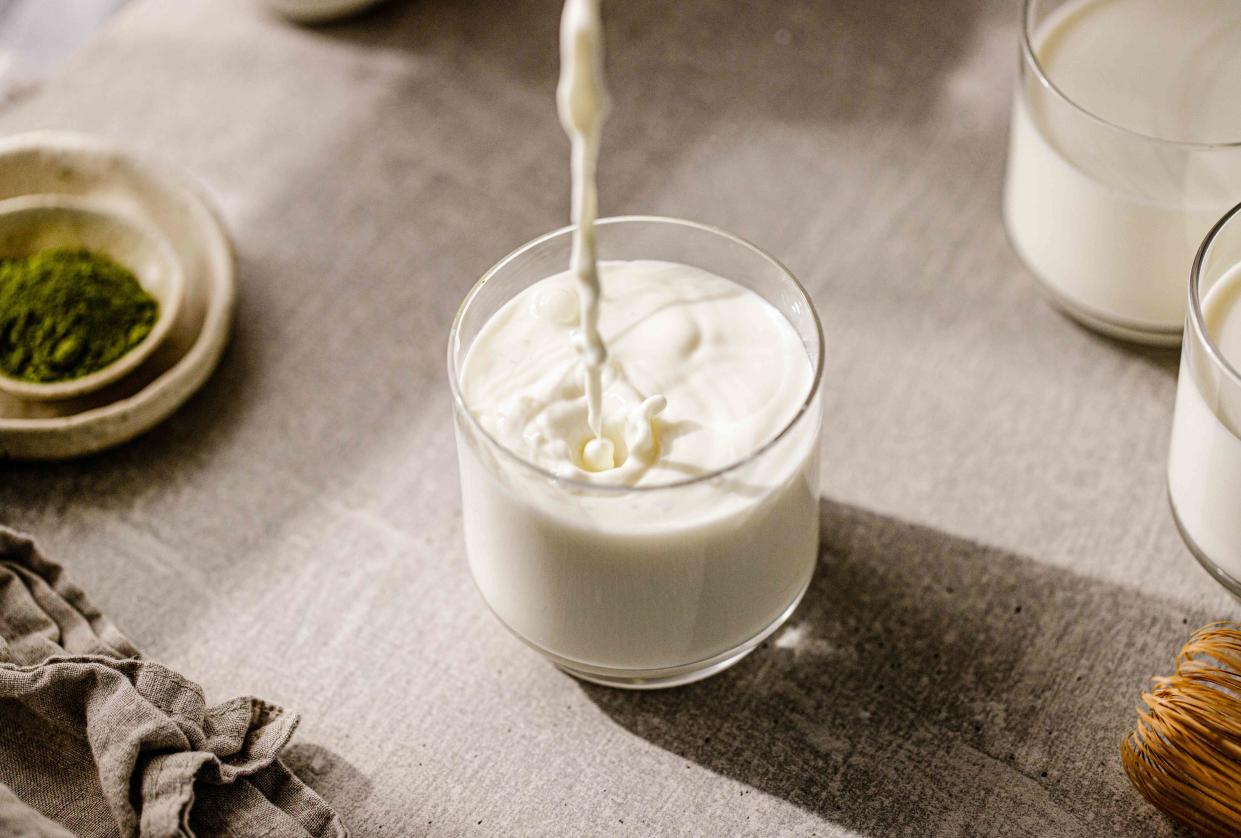Why Some Milk Doesn't Need to Be Refrigerated
If you've ever wondered why some milks are shelf-stable, you're not alone.

alvarez / Getty Images
If you’ve ever spotted a container of milk on a non-refrigerated grocery store shelf and wondered how that could be, you’re not alone.
For both dairy and plant-based milk, shelf-stable products last much longer than their refrigerated counterparts thanks to the pasteurization process used to bring liquid, from cows to coconuts, safely to consumers.
While these products are more popular in other countries with warmer climates, the popularity of shelf-stable milk grew during the start of the pandemic.
What is pasteurization?
Pasteurization is named after its inventor, French biologist Louis Pasteur. As large-scale production of milk became popularized in the 1800s, many people fell extremely ill from milk-borne illnesses.
In 1862, Pasteur completed the first successful test of the process to increase the safety of juice, eggs, and milk by killing harmful bacteria, which also extended their shelf life.
There are two common ways in which milk is pasteurized. In both types of pasteurization, the milk is heated then rapidly chilled back down as fast as possible. This process kills harmful bacteria such as Salmonella, E. coli, Listeria, and more. These bacteria can lead to a myriad of diseases and illnesses, like typhoid fever, tuberculosis, and diphtheria.
Types of pasteurization
Batch pasteurization: Involves heating milk in a large tank to a minimum of 145° F for at least 30 minutes.
Continuous flow pasteurization: High-temperature, short-time (HTST) pasteurization requires milk to be held at a minimum of 161° F for at least 15 seconds.
Ultra-High Temperature (UHT) pasteurization: Heats the milk between 275°–302° F for anywhere between five and 15 seconds.
Different types of milk
Milk that has not gone through the pasteurization process is called raw milk. While no research has been shown to differentiate between the nutritional content of pasteurized and unpasteurized milk, some consumers tout its benefits.
In 1987, the FDA deemed it illegal to transport raw milk across state lines and it’s generally only available in smaller stores who source it locally. Raw milk has not been pasteurized to kill harmful bacteria and can be contaminated with germs that can make consumers ill, causing stomach distress and serious illness, such as Guillain-Barré syndrome.
Milk that has undergone UHT pasteurization is known as shelf-stable, or aseptic, milk. After the UHT process, milk is filled into a sterile bottle or carton package which prevents re-introduction of harmful microorganisms.
This milk does not require refrigeration and will keep on shelves for anywhere from six to nine months post-production. However, once the container is opened, it does need to be refrigerated and consumed within roughly seven days.
Related: A Guide to Storing Milk and Other Dairy Products in the Fridge
“Ultra-pasteurization in aseptic dairy products eliminates all potentially harmful bacteria and increases the milk’s shelf life so it stays fresher longer,” says Laurie Drake, vice president or category growth marketing at Organic Valley. “The shelf-life of shelf-stable milk is generally limited by quality parameters, not safety. Over time, milks tend to separate and discolor, even if they are still safe to consume,” says Wood.
Companies like Califia Farms also produce shelf-stable versions of plant-based milks, like almond, oat, and coconut milk.
Is pasteurized milk better for you?
The benefits of UHT milk are vast for suppliers and consumers, as the products are cheaper to transport since they don’t require the same refrigeration systems, and can also sit on your pantry shelf for months without compromising quality.
“Shelf-stable milk is safe for consumption when stored properly and consumed within its expiration date,” says Drake. “As long as the packaging remains intact and unopened, the milk should remain safe for consumption.”
While the process used to treat the milk is largely the same apart from the temperature to which it’s heated, the flavor on UHT milk can vary due to the Maillard reaction. This is the same process that creates browned and complex caramelized notes in foods such as charred meat, browned toast, and roast coffee.
Related: The 6 Best Milk Frothers for Perfect Lattes, According to Our Tests
During this period in pasturization, the milk is subject to intense heat and the proteins inside begin to change. As the amino acids break down and the sugars start to carmelize, shelf-stable milk can be slightly sweeter and have a creamy, “cooked” taste.However, these changes are often minimal, especially when the milk is served chilled.
“There is a sweet spot for the combination of heat and time that limits changes to the milk,” says Kevin Wood, senior manager of technical support and commercialization at Califia Farms. “Nothing is added to make the milk shelf-stable. The process of making milk shelf-stable is physical (heat), not chemical, and does not have appreciable effects on the milk composition.”
For more Food & Wine news, make sure to sign up for our newsletter!
Read the original article on Food & Wine.
